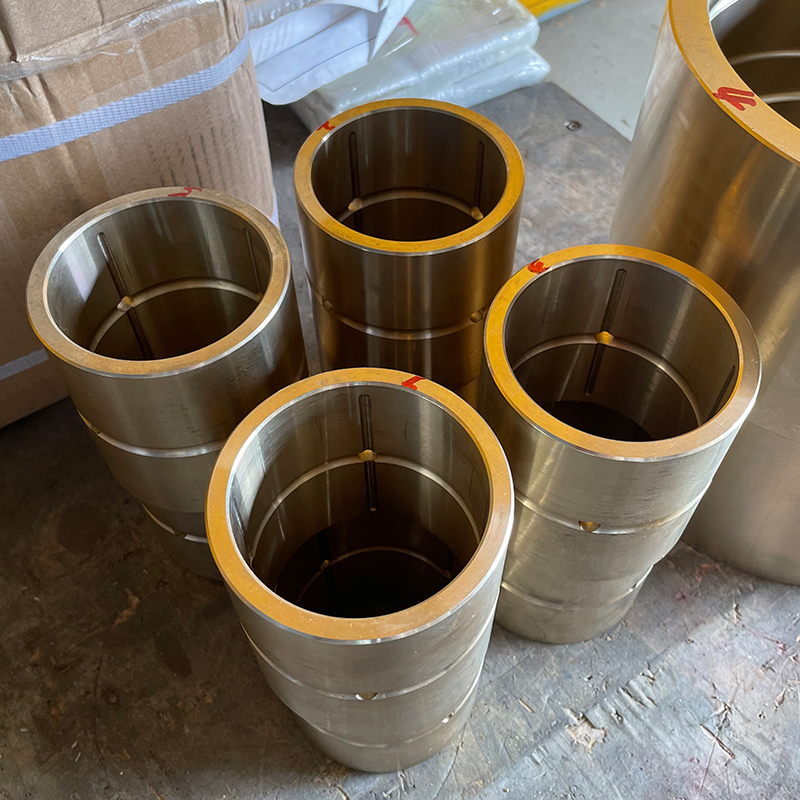 Mazhuang Village, Yuhe Town, Huixian City, Xinxiang City, Henan Province, China
Mazhuang Village, Yuhe Town, Huixian City, Xinxiang City, Henan Province, China
 Service Hotline +86 17630258963
Service Hotline +86 17630258963  Cell phone +86 17630258963
Cell phone +86 17630258963 The abrasion resistance test of crusher copper bushing is usually used to evaluate the abrasion resistance of copper bushing under repeated friction conditions. This experiment is crucial to ensure the long-term reliability and performance of the copper bushing in the crusher. The following are the general steps and considerations for conducting a regenerative wear test:
一、Crusher copper bushing to refolding wear resistance experiment steps:
Crusher copper bushing to refolding wear resistance experiment steps 1:Sample preparation:
To prepare a sample of the crusher's copper jacket, it is usually necessary to process it to a standard size.
Clean the sample to ensure that there is no surface dirt or oil.
Crusher copper bushing to refolding wear resistance experiment steps 2:Experimental equipment:
Using reciprocating friction testing machines or wear testing machines, these devices are able to simulate the reciprocating friction experienced by copper bushings in actual work.
Ensure that the friction-to-friction material and experimental conditions (such as load, speed) of the testing machine conform to the actual working environment.
Crusher copper bushing to refolding wear resistance experiment steps 3:Determine the parameters:
Determine the experimental parameters, such as friction, reciprocating frequency, test time, etc. Under normal circumstances, the load and speed should be close to the conditions of the copper bushing in actual use.
Set intervals between test cycles and samples to ensure that test results are representative.

Crusher copper bushing to refolding wear resistance experiment steps 4:Conduct tests:
Install the copper jacket sample on the test machine, and set the parameters to start the test.
In the course of the test, the wear condition of the copper bushing was observed, including the wear amount and surface damage.
Crusher copper bushing to refolding wear resistance experiment steps 5:Data recording:
Record the wear data of copper bushing regularly, such as wear rate, surface roughness, etc.
Record any anomalies that occur during the test, such as excessive wear or damage.
Crusher copper bushing to refolding wear resistance experiment steps 6:Analysis results:
The wear data were analyzed to evaluate the wear resistance of the copper bushing.
Compare the experimental results with the design requirements and industry standards of copper bushing to judge whether it meets the expectations.
Crusher copper bushing to refolding wear resistance experiment steps 7:Report preparation:
Prepare experimental reports, including experimental purposes, methods, results and conclusions.
Make suggestions for improvement and optimize the material or design of the copper jacket if necessary.
二、Key factors to consider in the abrasion resistance test of crusher copper bushing:
Friction to friction pair material: Select the friction pair material similar to the actual use to ensure the accuracy of the experiment.
Environmental conditions: Simulate the actual conditions of the temperature, humidity and other environmental factors, as true as possible to reflect the working conditions.
Sample consistency: Ensure that all test samples are consistent in material and processing to obtain reliable experimental data.
Data repeatability: Multiple experiments are performed to improve the reliability and repeatability of results.
Through these steps and precautions, you can effectively evaluate the wear resistance of crusher copper bushing under reciprocating friction conditions, and provide data support for the selection and improvement of copper bushing in practical applications.
